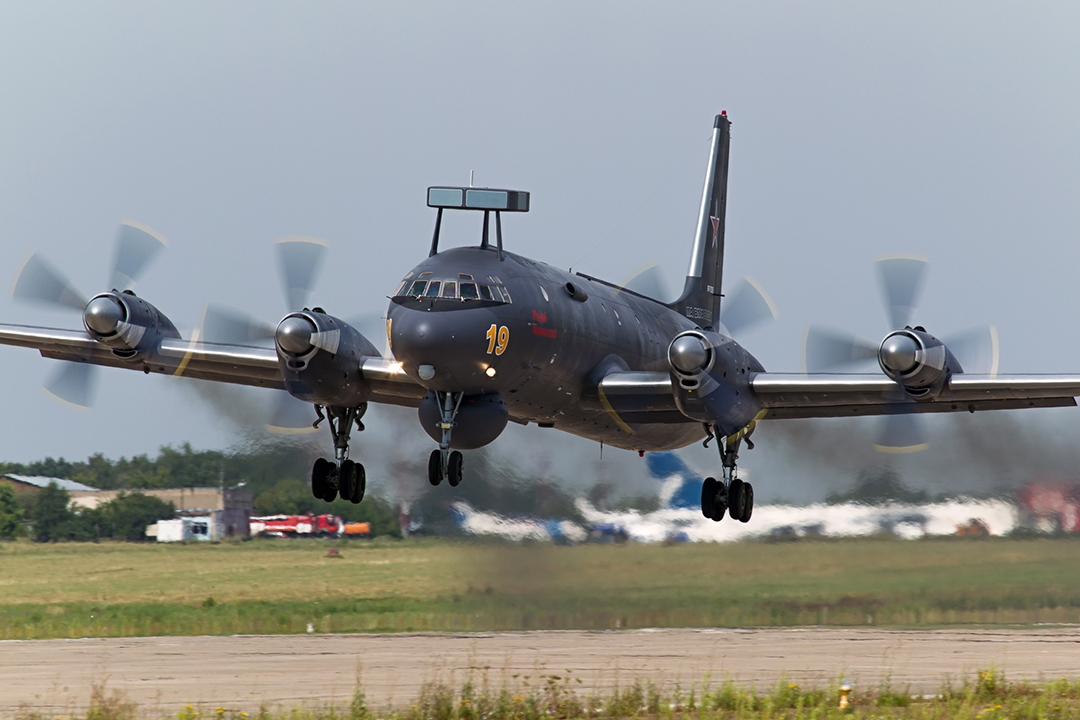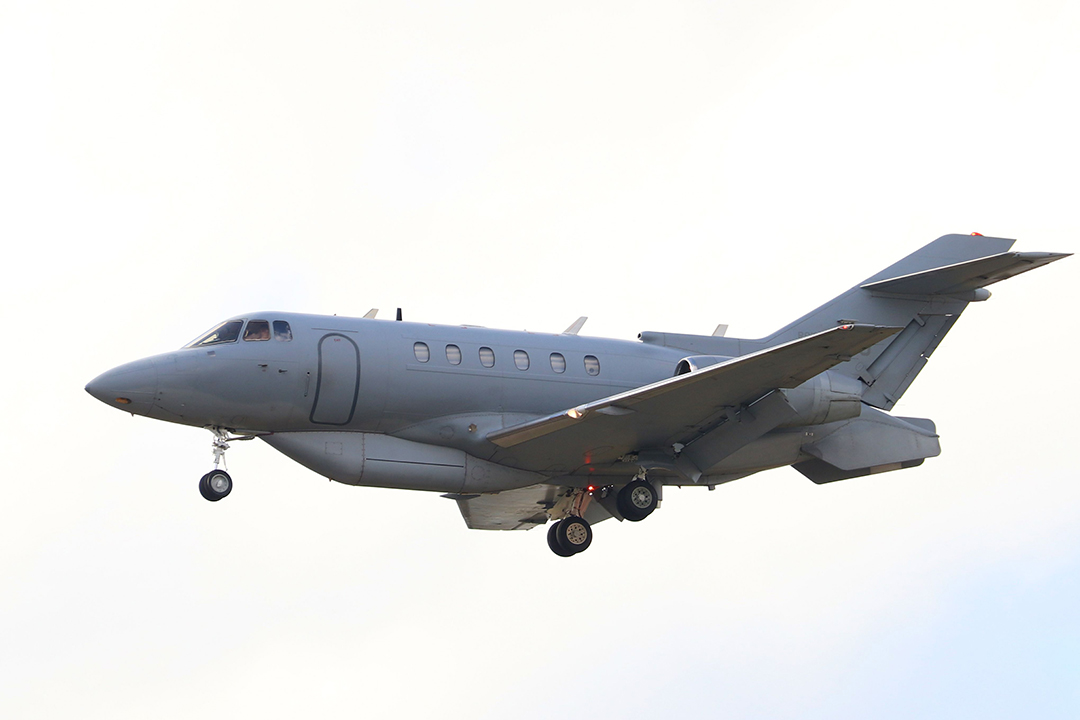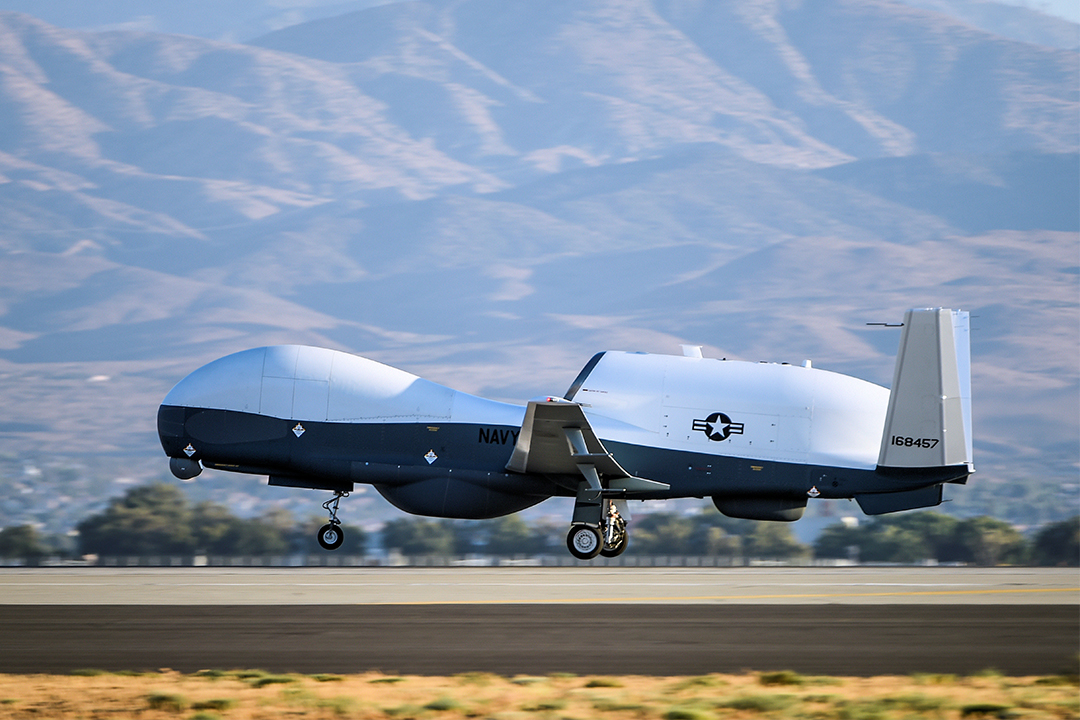
Published in the September/October 2020 Issue – Japan has experienced an increase in visits by Chinese and Russian ISR aircraft, but also has snoops of its own.
With the COVID-19 pandemic gripping the world, it is easy to forget that there is a ‘parallel’ world in which pre-March 2020 concerns remain unresolved. For the Asia-Pacific region this means continuing tension with the People’s Republic of China (PRC) over its territorial and maritime claims in the South China Sea (SCS); on-going border tensions between India and Pakistan and India and the PRC, as well as continuing uncertainty about the short and long term intensions of North Korea’s ‘Dear Leader’ Kim Jong-un (and increasingly sister Kim Yo-jong). Combine these considerations with the area’s geography and the economic and social effects of the pandemic itself and it is not hard to see that intelligence, surveillance and reconnaissance (ISR) capabilities are to the fore and that air- and space-borne systems provide the best option for monitoring events in this vast region. It is with a sampling of the area’s airborne systems that the remainder of this article concerns itself.
One of the least known regional airborne ISR capabilities is that of the PRC. Here, the past 20 years has seen that country develop and deploy a range of ‘information gathering’ aircraft based on the Tupolev Tu-154 (possibly designated as the Tu-154M/D Type 1) and the Shaanxi Y-8 and Y-9 (designs that have been developed from the Russian An-12 transport) airframes. In order, the Tu-154 is understood to have entered service during 1998 and has been fielded in at least two variants. In the first instance, aircraft B-4108 was equipped with a ventral array of blister and teardrop radomes and was almost certainly a signals intelligence (SIGINT) platform. For their part, six other aircraft of this type have been fitted with a large ‘canoe’ fairing beneath their forward fuselages and have been variously described as being radar reconnaissance and/or a SIGINT platforms. Despite its age, the Chinese continue to utilise the Tu-154 for reconnaissance, with the Japanese Air Self-Defence Force (JASDF) having intercepted such a platform off the Japanese home islands as recently as January 2020.
The most modern of the Shaanxi-based systems is the one that is based on the company’s Y-9 airframe and which was first identified during October 2014. Externally, these new ‘special mission’ aircraft are characterised by an aft-facing fin-top radome; a possible satellite communications antenna fairing above its rear fuselage; six or seven blade aerials above its wing centre section and forward fuselage; a ventral radome beneath its forward fuselage; a prominent nose radome and pairs of lateral antenna ‘boxes’ arranged on either side of its forward and rear fuselage. Possibly bearing the local designation ‘GX-8’, a limited number of ‘ferret’ Y-9s are thought to have been supplied to the People’s Liberation Army’s Navy (PLAN) and have been intercepted by JASDF fighters approaching Japan’s air defence zone (ADZ) from 2016 onwards, with the latest example being spotted as late as early June 2020.
Visitors to Japan’s ADZ are not limited to manned aircraft – a Chinese unmanned aerial vehicle (UAV) was intercepted over the East China Sea – or just those aircraft belonging to the PRC. A variety of Russian aircraft (including Tu-142 and Ilyushin Il-38 maritime patrol and Il-20M and Tu-214R ‘ferret’ types) are fairly regular visitors to offshore Japan. For their own part (and aside from tactical reconnaissance assets), both the JASDF and the Japanese Maritime Self-Defence Force (JMSDF) operate small fleets of ‘snoopers’. In order, the JASDF operates a small force of YS-11EB derivatives of the twin-engined NAMC YS-11 airliner in the electronic reconnaissance role. Characterised by both dorsal and ventral antenna arrays, the JASDF’s quartet of YS-11EB are said to have been used to monitor Sino-Russian activity in the northwest Pacific and the Sea of Japan and are said to have been used to collect data on North Korean missile tests. As of the period 2019-20, the now ageing YS-11EB remained in service. Looking the future, a prototype ‘ferret’ based on Japan’s Kawasaki C-2 transport aircraft made its maiden flight in February 2018 and may be a precursor to a ‘production’ YS-11EB replacement.

For its part, the JMSDF operates an airborne maritime reconnaissance & SIGINT capability built around eight assorted Kawasaki EP-3 ‘ferret’ and Lockheed Martin OP-3C multi-sensor surveillance aircraft. In order, the EP-3’s baseline mission suite is logged as having comprised ‘low-’ (manufactured by NEC) and ‘high-band’ (manufactured by Mitsubishi) sub-systems, with a possible total frequency coverage of between 30MHz and 18/20GHz. Identified EP-3 usage includes regular monitoring of the Sea of Japan and the waters around the Japanese home island of Honshu’s western coastline together with ‘specials’ against targets such as North Korea’s nuclear programme.
The JMSDF’s second ‘surveillor’ (the OP-3C) is a perhaps even more exotic creature than the ‘ferreting’ EP-3. As far as can be ascertained, the service’s quartet of OP-3Cs are used to monitor ‘shipping of interest’ in the seas around Japan and are equipped with a mission suite that, over time, has included an electronic support (ES) system, at least one radar, the DB-110 electro-optic/infra-red (EO/IR) imaging system and an IR ‘search & track’ sub-system. As with the JASDF’s YS-11EB fleet, the JMSDF’s EP-3 and OP-3C aircraft are becoming ‘long in the tooth’ and as of 2018, it was being suggested that there was a wish to obtain replacements for both types of aircraft.
Mention of North Korea’s nuclear and missile programmes leads neatly to consideration of the Republic of Korea’s (RoK) recapitalisation of its ability to monitor its northern neighbour’s activities. Traditionally, the RoK has relied heavily on America to boost its airborne surveillance capability which is currently vested in tactical reconnaissance platforms and the ‘Peace Krypton’ and ‘Peace Pioneer’ programmes. In reverse order, the ‘Peace Pioneer’ RC-800SIG capability is vested in four Hawker 800XP business jets that have been modified to accommodate an L3Harris combined communications- and electronic intelligence suite that covers a range of frequency ranges up to and including the Ka-band (26.5 to 40GHz). The same airframe also forms the basis of the RoK’s four ‘Peace Krypton’ RC-800RA aircraft that are equipped with an X-band (8-12.5GHz) Lockheed Martin synthetic aperture radar (SAR) for ground surveillance. As of 2020, all eight of these aircraft were being reported as ‘being in service’, with (in July 2020) the ‘Peace Krypton’ aircraft being the subject of American approval for an estimated $250 million RC-800RA follow-on support and equipment upgrade programme which, if consummated, will have Lockheed Martin as its ‘principle contractor’

As noted earlier, pre COVID-19 the RoK was in the process of a substantial recapitalisation effort that would both improve its available ISR capability and reduce reliance on its American ally. As part of this effort, the RoK has acquired a pair of Dassault Falcon 2000 business jets that have been modified to undertake both communications intelligence gathering and missile launch detection. Entering service during (it is thought) 2017/18, these Falcon 2000s are said to be discrete replacements for the ageing RC-800SIG aircraft. A similar lack of fanfare greeted the arrival of the RoK’s first Block 30 Northrop Grumman RQ-4B Global Hawk high-altitude, long endurance (HALE) UAV in late December 2019. Offering both EO/IR and radar imagery, the Global Hawk will provide South Korea with the ability to monitor its neighbours for extended periods of time and the type (together with its MQ-4C Triton maritime surveillance offspring) is becoming a major force in ISR provision in the Pacific region. In addition to the RoK, Australia is in the process of acquiring up to six MQ-4C platforms as a corner stone in its latest ISR plan while Japan is understood to have decided to procure three RQ-4s for delivery by September 2022. For its part (and as of May 2020), the United States Navy (USN) is reported to have deployed a pair of MQ-4Cs on Guam, while the United States Air Force (USAF) made its first RQ-4 rotation to Japan (specifically, Yokota Air Base) during late May 2020.
As noted earlier, the RQ-4B is equipped for EO/IR and radar imaging while the MQ-4C is optimised for maritime operations. Retaining the RQ-4’s airframe profile, the MQ-4C carries a mission suite that includes the X-band AN/ZPY-3 multi-function active sensor (MFAS) radar, an AN/ZLQ-1 ES system (with specific emitter identification), an MTS-B EO/IR imager (with auto-track), an automatic identification system (AIS) application and a communications package that includes Link 16. Again, the MQ-4C is quoted as having a maximum range of 9,950 nautical miles (18,427km) and as being able to stay aloft for up to 30 hours. In the specific Australian context, the combination of the updated Jindalee over-the-horizon radar, the MQ-4C, the Boeing P-8A maritime patrol aircraft and the E-7A airborne early warning platform should provide that country with an extremely capable

surveillance capability for the mid- to late 21st century.
Hopefully, the foregoing will have given the reader at least a feel for current airborne ISR in the Asia-Pacific region. At the time of writing (August 2020), there was no reason to suppose that any of the described programmes were being cancelled due to the effects of the COVID-19 virus. This said, there is no doubt that the pandemic has caused grievous damage to the populations of almost all the countries in the region (particularly those of China, India and Australia) and it is almost certain that the economic effects of what is effectively the 21st century’s ‘Black Death’ will only serve to increase both tensions and the need to ‘see’ what competitor nations are up to.
by Martin Streetly











